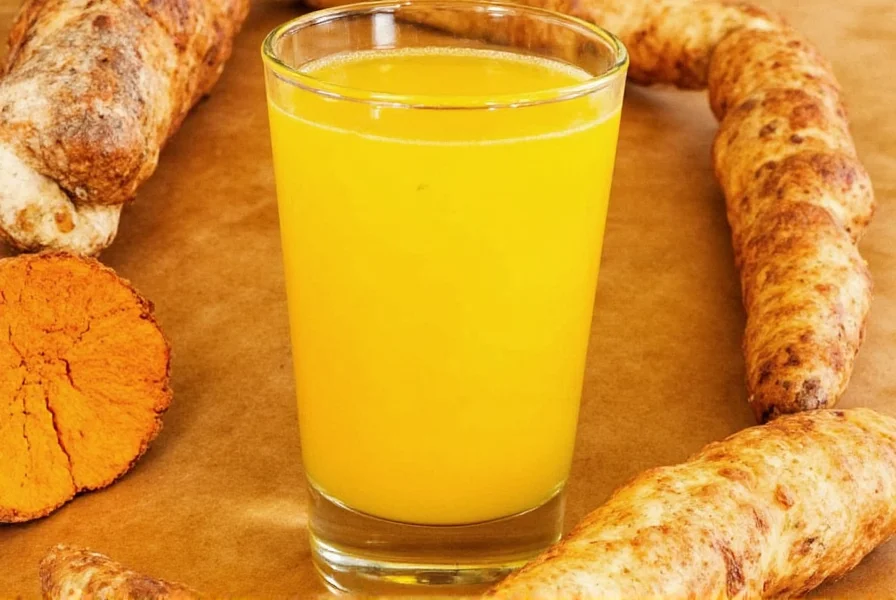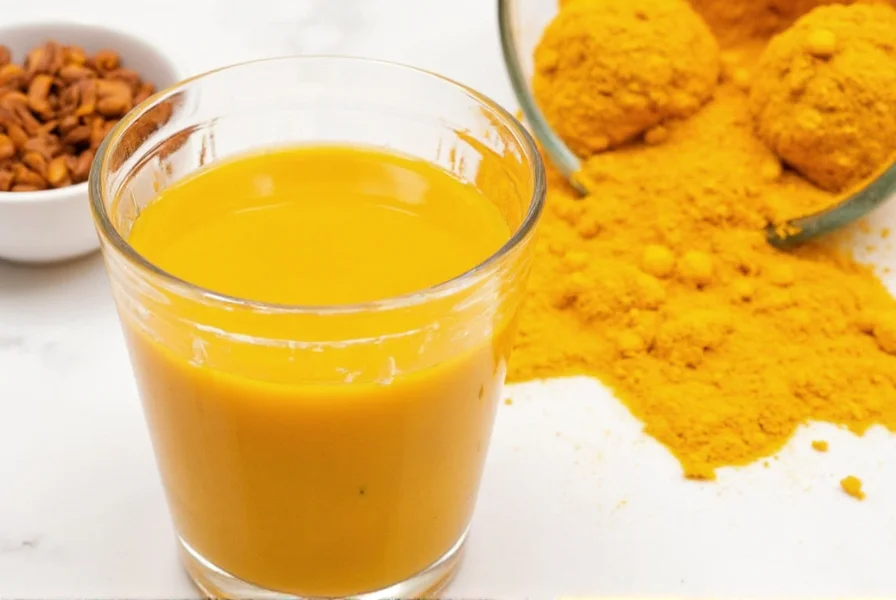Turmeric shots have surged in popularity as a convenient way to harness the potential health benefits of turmeric in a concentrated, easily digestible form. Unlike culinary uses of turmeric powder, these potent beverages deliver a higher concentration of curcumin—the primary bioactive compound responsible for turmeric's therapeutic properties. Understanding the science behind turmeric shot health benefits requires examining both the established research and important limitations.
What Exactly Are Turmeric Shots?
Turmeric shots typically contain freshly grated or juiced turmeric root blended with complementary ingredients that enhance both flavor and bioavailability. A standard preparation includes:
| Core Ingredient | Purpose | Typical Amount |
|---|---|---|
| Fresh turmeric root | Source of curcumin and other curcuminoids | 1-2 inches |
| Fresh ginger root | Additional anti-inflammatory compounds | 1 inch |
| Black pepper | Contains piperine to boost curcumin absorption | Pinch (1/8 tsp) |
| Lemon juice | Vitamin C and flavor balance | 1-2 tbsp |
| Healthy fat (optional) | Further enhances curcumin absorption | 1 tsp coconut oil |

The Science Behind Curcumin's Anti-Inflammatory Effects
Curcumin, turmeric's most studied compound, demonstrates significant anti-inflammatory properties at the molecular level. Research published in the Journal of Medicinal Food indicates curcumin may inhibit multiple inflammation pathways, including NF-kB, a molecule that triggers inflammation-related gene expression. This mechanism explains why many people report reduced joint discomfort after regular consumption of turmeric shots for inflammation.
A 2016 meta-analysis in the Journal of Medicinal Food reviewed eight clinical trials involving 797 participants with osteoarthritis. The analysis concluded that curcumin supplementation demonstrated comparable effectiveness to non-steroidal anti-inflammatory drugs (NSAIDs) for reducing pain and improving function, with fewer gastrointestinal side effects. However, researchers noted that most studies used standardized curcumin extracts at doses higher than typically found in homemade turmeric shots.
Understanding Bioavailability Challenges
One critical factor often overlooked in discussions about turmeric and black pepper bioavailability is curcumin's poor absorption. Studies show that curcumin alone has extremely low bioavailability due to rapid metabolism and elimination. This explains why traditional preparations of turmeric in Indian cuisine often include black pepper and fats.
Piperine, the active compound in black pepper, has been shown to increase curcumin bioavailability by up to 2,000% according to research in Planta Medica. Similarly, consuming turmeric with healthy fats (like coconut oil or avocado) enhances absorption because curcumin is fat-soluble. These scientific insights directly inform the standard ingredients in effective how to make turmeric shots for inflammation recipes.
Evidence-Supported Health Benefits
Based on current research, here are the most substantiated daily turmeric shot benefits:
Joint Health Support
Multiple studies suggest curcumin may help reduce symptoms of osteoarthritis and rheumatoid arthritis. A randomized controlled trial published in Phytotherapy Research found that 500 mg of curcumin daily significantly improved pain and physical function scores in people with knee osteoarthritis compared to placebo.
Antioxidant Protection
Curcumin demonstrates potent antioxidant activity by neutralizing free radicals and boosting the body's own antioxidant enzymes. This dual action may help protect against oxidative stress, which contributes to aging and many chronic diseases. The natural anti-inflammatory turmeric shots provide a concentrated source of these protective compounds.
Digestive Support
Turmeric has traditionally been used to support digestive health. Modern research suggests curcumin may help stimulate bile production, which aids fat digestion. The inclusion of ginger in most turmeric shot recipes further enhances digestive benefits through gingerol's soothing properties.
Important Limitations and Considerations
While the scientific evidence for turmeric shots shows promise, several important limitations exist:
- Dose dependency: Most clinical studies use standardized curcumin extracts at 500-2,000 mg daily, which typically exceeds the curcumin content in a single homemade shot
- Short-term studies: Many trials run for 8-12 weeks, so long-term effects remain less documented
- Individual variation: Responses to curcumin vary significantly based on genetics and health status
- Not a medical treatment: Turmeric shots should complement—not replace—conventional medical care
Safety Profile and Potential Interactions
Turmeric is generally recognized as safe (GRAS) by the FDA when consumed in food amounts. However, high doses or prolonged use of turmeric shot side effects may include:
- Digestive upset in sensitive individuals
- Increased risk of bleeding for those on blood thinners
- Potential interactions with diabetes medications
- May exacerbate gallbladder issues
The European Food Safety Authority established an acceptable daily intake of 0.1 mg of curcumin per pound of body weight (0.2 mg/kg). For most adults, this translates to approximately 1-3 teaspoons of fresh turmeric root daily—equivalent to 1-3 standard turmeric shots.

Maximizing Benefits: Practical Recommendations
To optimize the potential turmeric shot for joint pain benefits while minimizing risks:
- Include 1/8 teaspoon of black pepper in each shot to enhance absorption
- Consume shots with a small amount of healthy fat (coconut oil, avocado)
- Limit consumption to 1-2 shots daily unless under medical supervision
- Use fresh turmeric root rather than powder for higher curcumin content
- Consult your healthcare provider if taking medications or managing health conditions
Turmeric Shots vs. Other Consumption Methods
While turmeric shot benefits are convenient, they represent just one way to consume turmeric. Consider these comparisons:
- Capsules/extracts: Provide standardized curcumin doses but lack the synergistic compounds found in whole turmeric
- Culinary use: Lower concentration but part of balanced meals with natural absorption enhancers
- Golden milk: Contains turmeric with fats and spices, but typically lower concentration than shots
For those seeking the most concentrated form with immediate consumption, turmeric shots offer distinct advantages. However, incorporating turmeric into regular cooking provides sustained exposure throughout the day.
Conclusion: A Complementary Wellness Practice
Turmeric shots represent a convenient method to incorporate turmeric's potential health benefits into daily routines. The strongest evidence supports their role in reducing inflammation and providing antioxidant protection, particularly when prepared with absorption-enhancing ingredients. While not a cure-all, they can serve as a valuable component of a comprehensive wellness strategy when used appropriately and with realistic expectations about their daily turmeric shot benefits.











 浙公网安备
33010002000092号
浙公网安备
33010002000092号 浙B2-20120091-4
浙B2-20120091-4